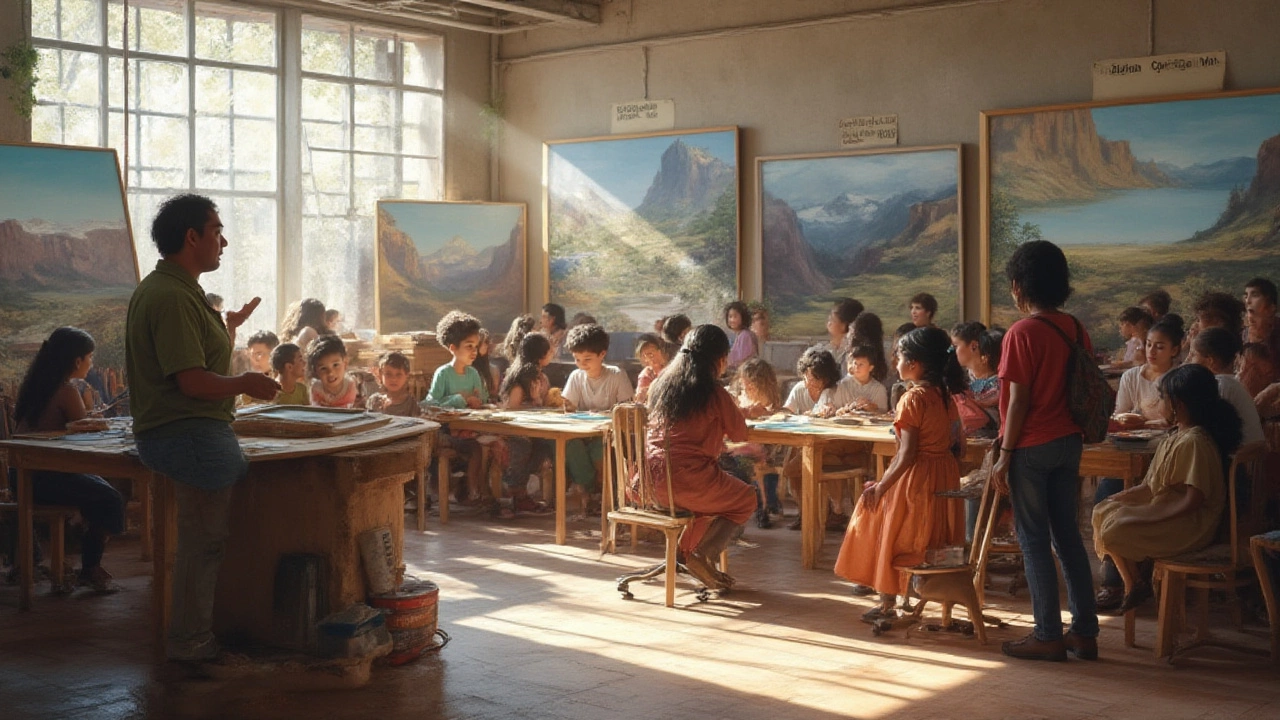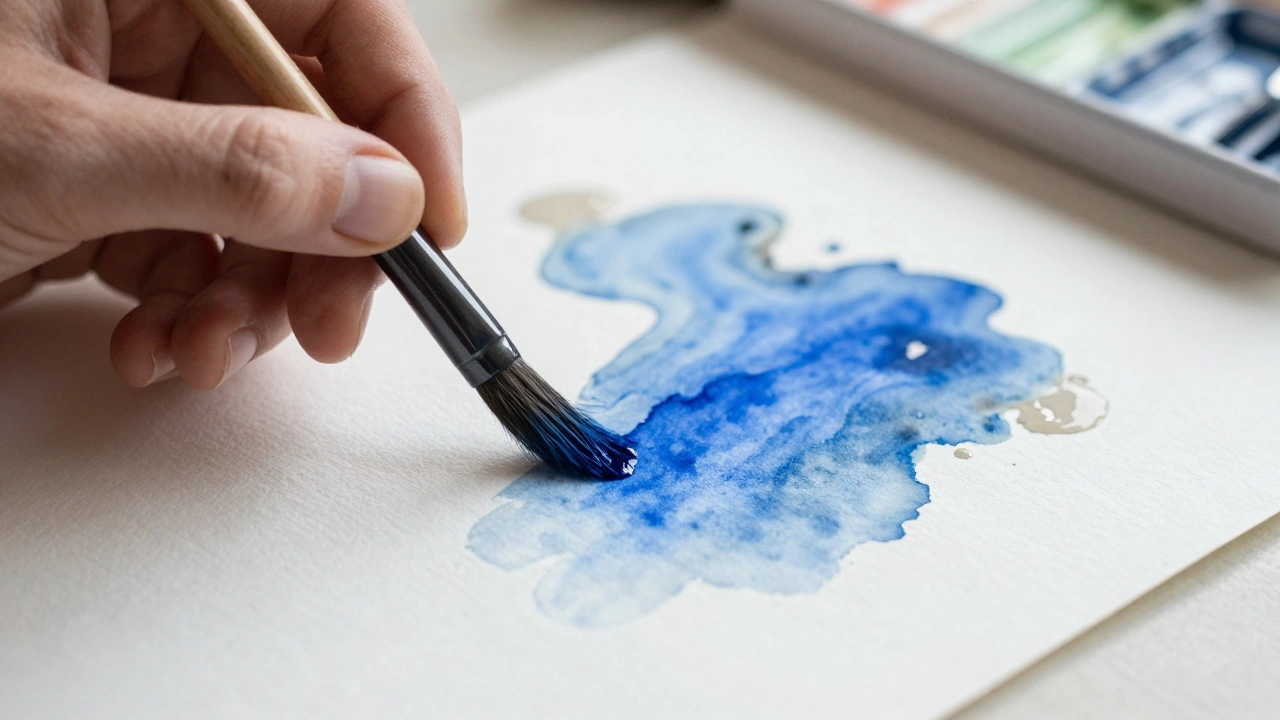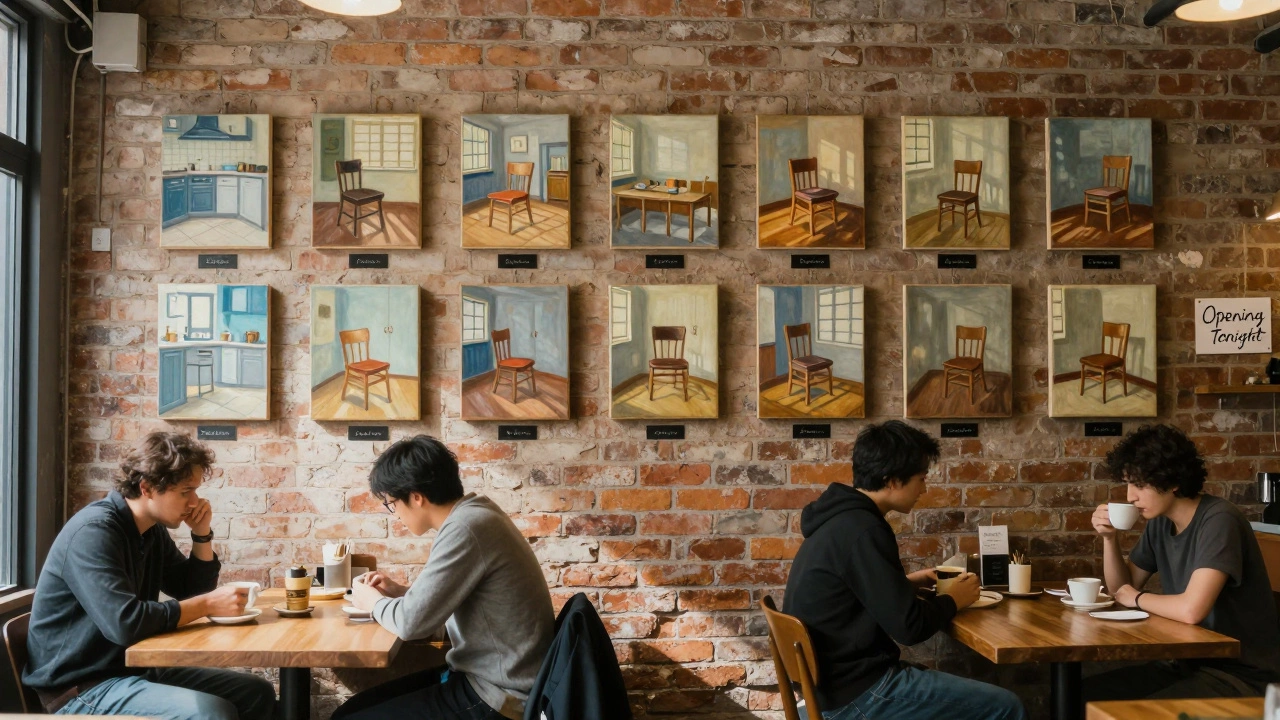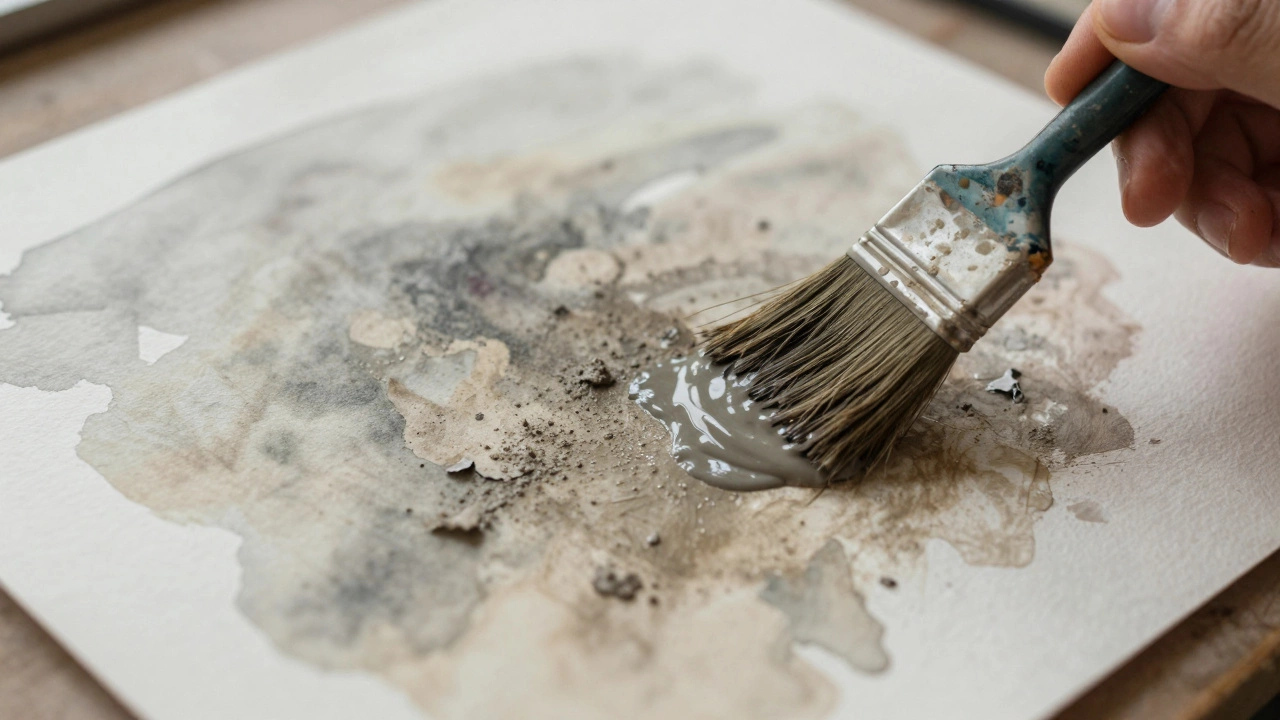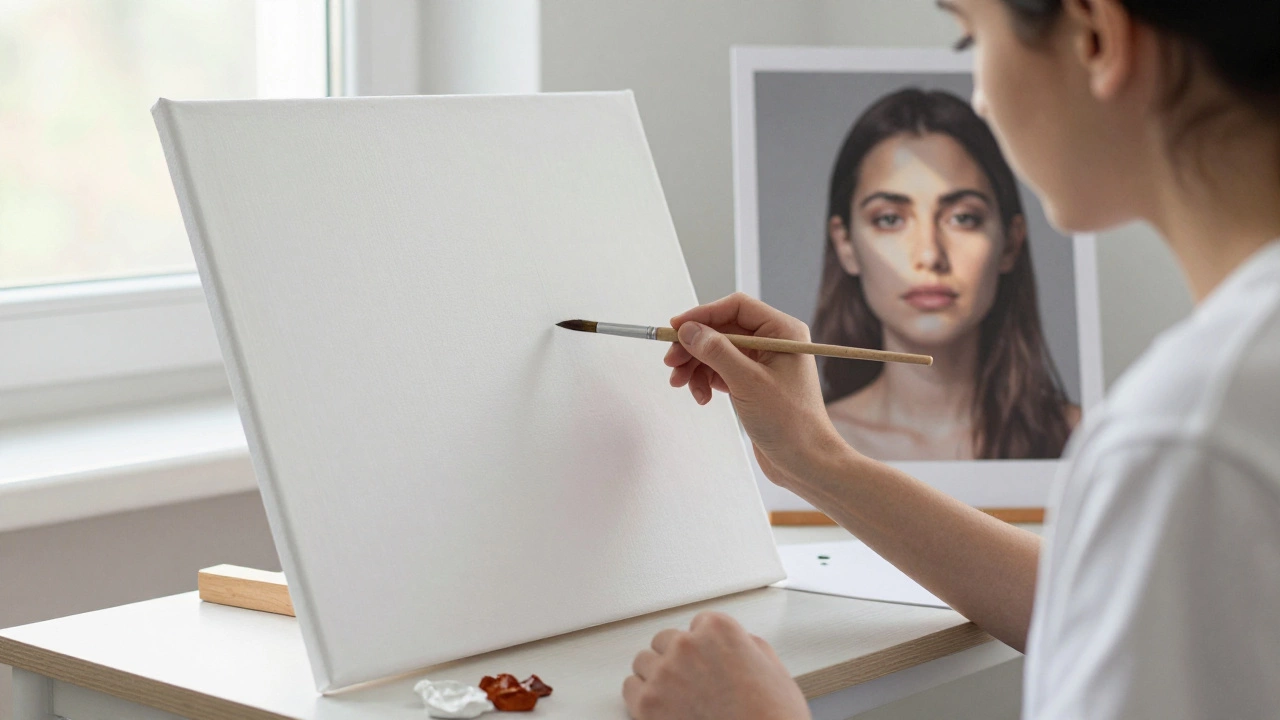You know what’s underrated? Arguing about the best American landscape artist ever. Ask ten people, and you’ll get ten answers—sometimes more if someone throws in an unexpected wild card. America’s wilderness and cityscapes are wildly different from Europe’s, and so is the art. Forget gentle English hills. Here, artists stared down the Rockies, Yosemite’s granite, roaring Midwestern storms, and buzzing city harbors—packing raw energy onto canvas in a way that made the world pay attention. We’re talking about painters with the guts to get covered in mud, chased by thunderstorms, or bitten by bugs, all for the sake of the perfect view. So, who really tops the list?
The Hudson River School: Birthplace of American Landscape Painting
When folks argue about the best American landscape artist, one name always floats up: Thomas Cole. British-born, but American through and through when it counted. Back in the 1820s and 1830s, the United States was a baby country, bursting with big dreams but no visual identity. Cole saw potential in the wilds of New York’s Hudson River Valley, and painted scenes that weren’t just ‘pretty’; they were full of drama, weather, and moral meaning. He started the Hudson River School—a loose clan of artists with a shared obsession for big, untamed nature. These weren’t shy landscapes. Think epic, even a little preachy. You can spot them in museums everywhere, often huge canvases showing rivers snaking through deep forests, haunting ruins, or tiny figures dwarfed by wild mountains.
Cole may have lit the spark, but his student Frederic Edwin Church fanned it into a proper fire. Church didn’t just paint New York; he went to South America, the Arctic, and painted volcanoes, glaciers, jungles, the whole lot. In fact, art fans still talk about his 1859 painting “Heart of the Andes”—it’s about as tall as a door and so packed with detail, botanists have used it for plant ID. When that painting debuted in New York, people lined up around the block, paid 25 cents a head, and viewed the artwork in a darkened room while soft music played. There was nothing like it. Church made landscape art feel like the Netflix spectacle of its time.
The Hudson River School includes legends such as Albert Bierstadt, whose mountains sometimes look more epic than real life, and Asher B. Durand, who loved painting knotted oak roots and peaceful mist. Their legacy? Making Americans proud of their raw country—convincing viewers that wildness was worth saving, not tearing down. If you ever see a big, dramatic American landscape painting from the 19th century, chances are you’re looking at their work or their influence. The Hudson River School marks the real starting line for best American landscape artist debates.
Breaking the Mold: Luminists, Tonalists, and the Rise of Modernity
After the initial thunderclap of the Hudson River School, tastes started to shift. Around the 1850s-1880s, new waves of artists wanted something moodier—quieter lights and softer details. Enter the Luminists, like Martin Johnson Heade and Fitz Henry Lane. They dialed down the drama but ramped up the atmosphere. It was all about capturing the silvery stillness over a salt marsh or the way light shimmered on water at sunset. Luminism isn’t flashy, but it sneaks up on you—one fan dubbed their paintings “the art of holding your breath.”
If you ever study a Luminist painting, the trick is in the horizon. It’s almost always dead level, with calm water or cloudless sky, and barely visible brushstrokes. These artists didn’t just want to show you scenery; they wanted you to feel time stretching out, slow and endless. It’s meditative, almost trance-like. Some critics say Heade’s paintings are perfect stress-busters—just spend a few minutes with “Thunder Storm on Narragansett Bay” and you’ll get it. The painting almost hums with electricity.
Then came the Tonalists, who leaned into mood and shadow. Think George Inness and James McNeill Whistler. They liked soft colors, lots of mist, and subjects on the edge of dreams. Their work flirts with fantasy, sometimes using an almost monochrome palette. Whistler’s “Nocturne in Black and Gold” is infamous—a swirl of fireworks and darkness that sparked a nasty review calling it “flinging a pot of paint in the public’s face.” The artist sued and won a tiny sum, but the legend grew.
Stats-wise, big auction houses report that Tonalist and Luminist painters have seen rising prices since the late 1990s. The broadening market proves their subtle beauty hits a chord with today’s crowd, who maybe want less chaos and more calm in their art.
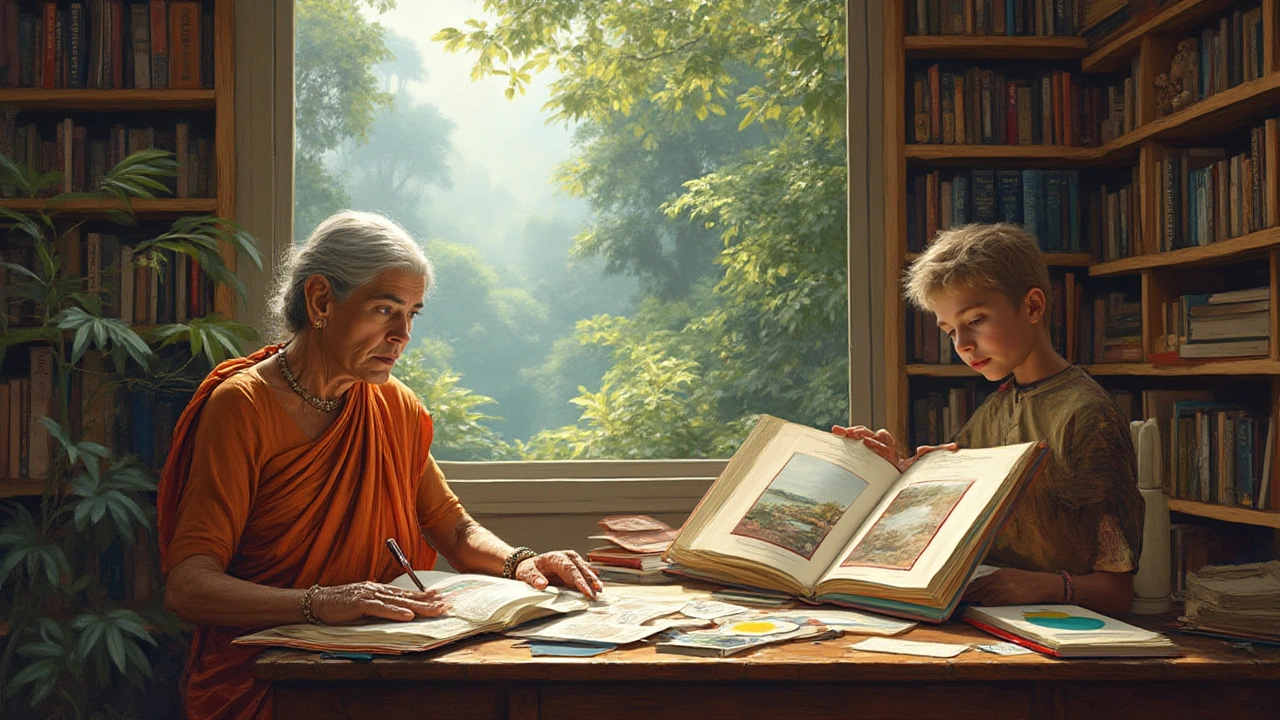
The Wild West and National Parks: Bierstadt, Moran, and the Western Epic
If you’ve ever seen a poster for Yosemite, Glacier, or Yellowstone National Park and thought “Wow, that looks unreal,” you’re not alone. That’s precisely what early Americans thought, too—until landscape painters dragged their easels out West in the 1860s and 1870s and made believers out of skeptics. Albert Bierstadt gets a special nod here. He wasn’t the first to see the Rockies, but he brought back enormous canvases that made Manhattan’s wealthy viewers feel like they’d walked into a new world. People would gasp and argue if his mountains were real or painted from dreams. Bierstadt had a flair for drama—glowing clouds, stampeding herds, tumbling waterfalls, a rainbow thrown in for good measure. His painting “Among the Sierra Nevada, California” debuted in 1868, wowing crowds. In today’s money, it fetched millions at auction.
Thomas Moran’s name is stitched into the fabric of Yellowstone’s history. He explored the vast geysers and sulfurous pools long before smart tourists flooded in. His paintings helped convince Congress to make Yellowstone the first National Park in 1872. One painting, “Grand Canyon of the Yellowstone,” was hung in the nation’s Capitol. It wasn’t a postcard version of nature—it was wild, volcanic, dangerous, and beautiful. Moran’s knack for color and scale made him a government favorite, and the West owes him a debt for firing up conservation fever.
Curiously, these artists saw themselves as adventurers, not studio-bound dreamers. Bierstadt and Moran both joined dangerous expeditions, risking fever, starvation, and snakebite. They believed you had to suffer a little for art. Some critics say their paintings edge toward fantasy—a fair bite of creative license, with mountains a touch bigger and sky a touch brighter than reality. But their impact stuck: National Geographic credits them with changing public thinking about wild lands, making conservation cool ahead of its time. A fun tip: Google the size of their paintings. Some are longer than the average Sydney bus!
Contemporary Voices and Enduring Influence
After World War II, American artists went wild for abstraction, and landscape painting faded in the pop-culture rankings. But here’s the twist: nature never let go, and a bunch of contemporary artists circled back—each making the landscape genre freshly relevant. One name that pops up is April Gornik. Her vast skyscapes channel the old Hudson River School grandeur but wrap in a touch of environmental warning. Or David Hockney (yes, he’s British-born but basically Californian after decades by the pool), whose bright, pulsing iPad landscapes are instantly iconic.
Across galleries today, you’ll run into landscape veterans breaking the mold—Maya Lin, who designed the Vietnam Veterans Memorial, builds earthworks and installations that force us to confront environmental fragility head-on. There’s also Alexis Rockman, whose paintings track everything from invasive species to climate collapse using a kind of wild sci-fi realism. These artists have picked up the old tradition and made it fiercely contemporary.
| Artist | Era | Most Famous Painting | Notable Fact |
|---|---|---|---|
| Thomas Cole | Hudson River School | The Course of Empire | Started American landscape tradition |
| Frederic Edwin Church | Hudson River/Expeditions | Heart of the Andes | Painted across continents |
| Albert Bierstadt | Western Epic | Among the Sierra Nevada | Painted mountains larger than life |
| Thomas Moran | Western Epic | Grand Canyon of the Yellowstone | Pushed for National Parks |
| April Gornik | Contemporary | Storm and Fires | Modern environmental focus |
America’s best landscape artist? It’s nearly impossible to crown just one. The answer depends on what moves you: Cole’s romantic wilderness, Church’s jaw-dropping spectacle, Bierstadt’s Western drama, Moran’s advocacy, or the confrontational views of today’s painters. If you’re visiting a US museum and want to hunt for their works, the Met in New York, the National Gallery in D.C., and the Fine Arts Museums of San Francisco are safe bets for the classics. For the new stuff, don’t skip cutting-edge galleries—look for upcoming shows by environmental artists. The best tip: look for the painting that makes you stop and stare, the one that makes the outdoors feel bigger than usual. That’s how you know you’ve found greatness.
